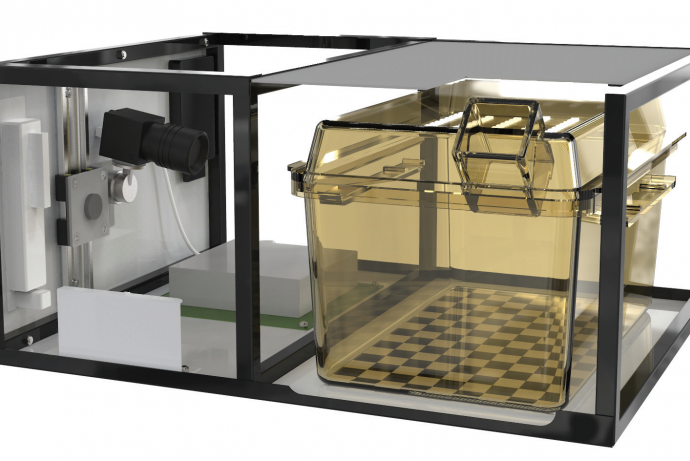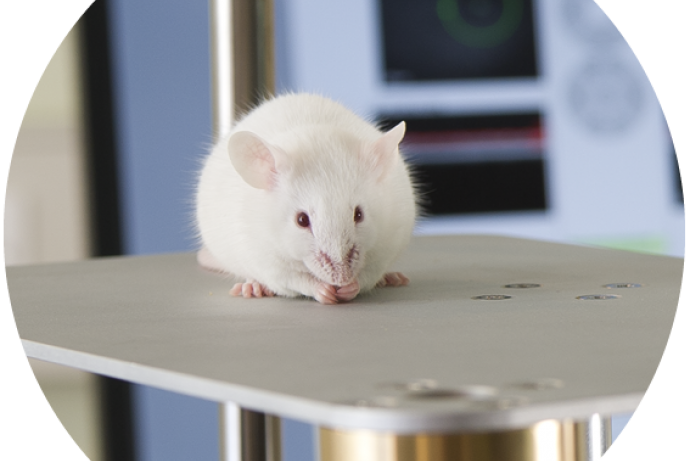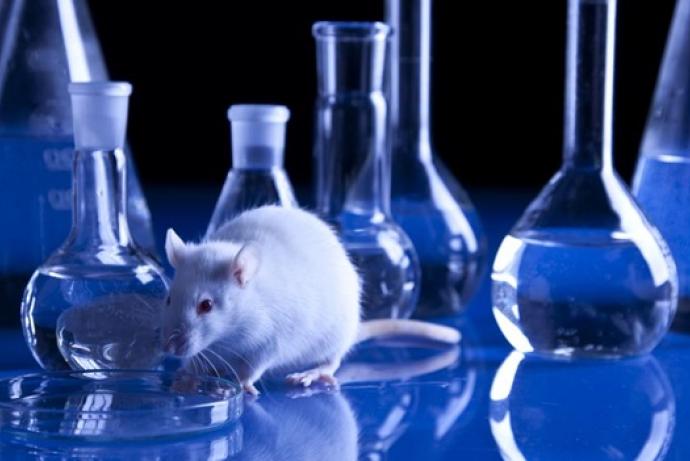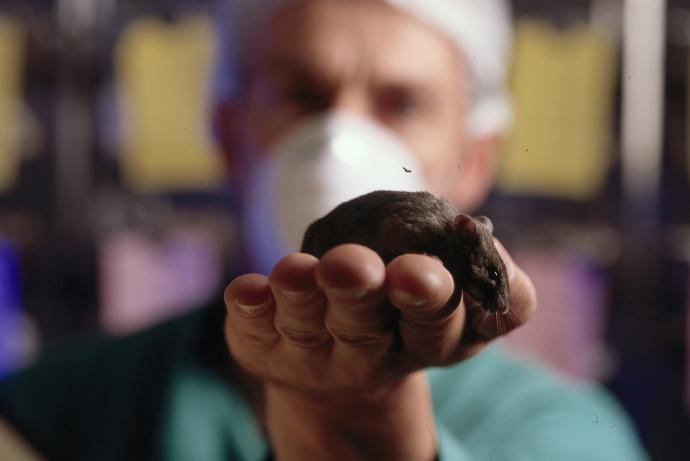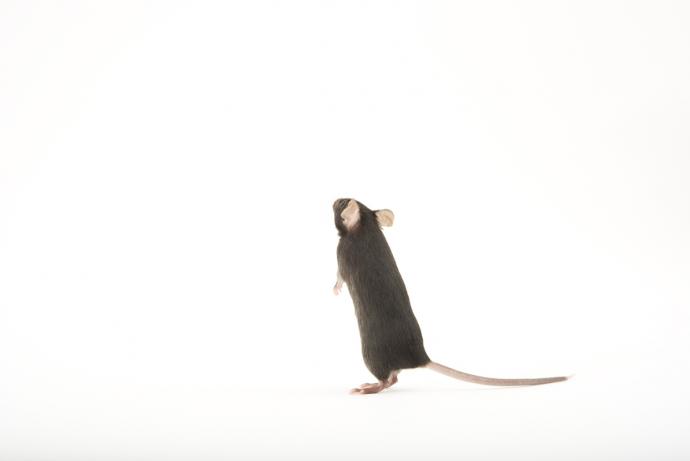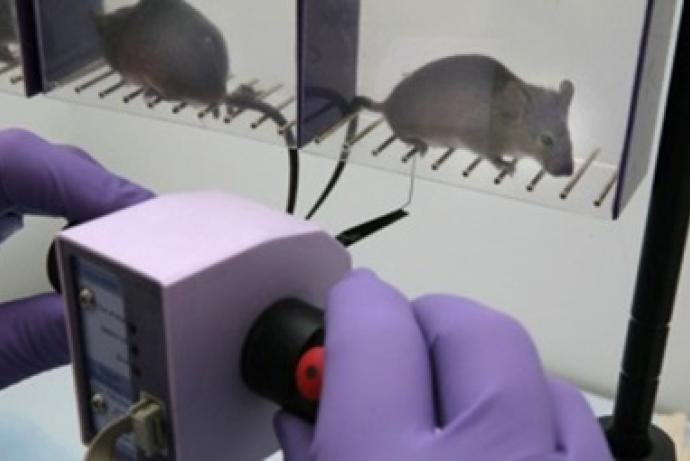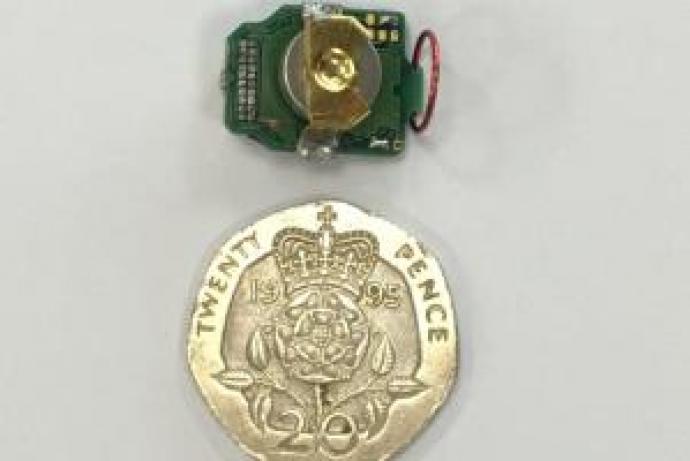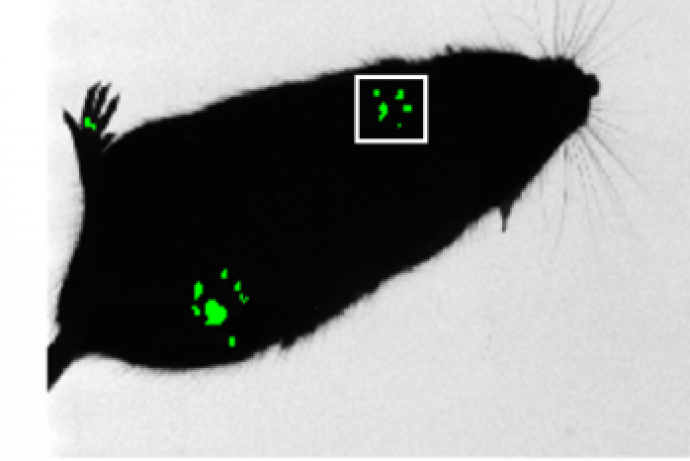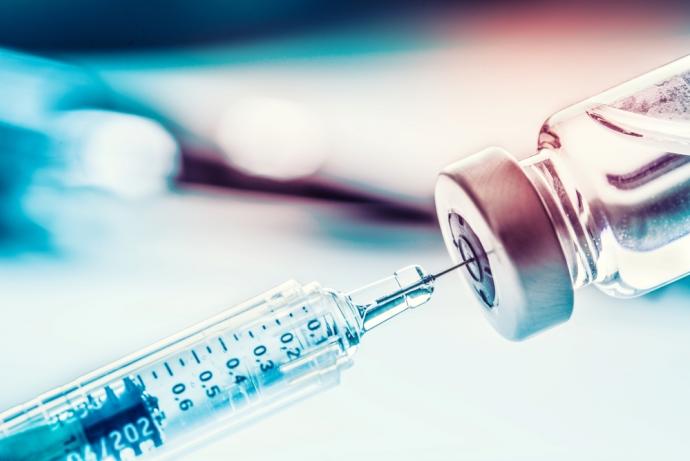Moshers
The aim of this Challenge was to develop an approach/device to accurately measure individual food intake (real time measurement or proxy) in group-housed mice (three to five mice). The approach/device should be affordable, compatible with all types of mouse caging (and maybe applicable to rat and other rodent caging), and data should be easy to collect, analyse and interpret.
Through this Challenge, the team at Research Devices Ltd has developed a fully functioning monitoring system that is able to visually identify mice and assess their food intake.
The system harnesses artificial intelligence (AI) and cameras retrofitted to existing home cage racks and captures data in both the light and dark phases. The system is scalable so large numbers of cages can be monitored, data storage can be local or in the cloud, and the web-based application is easily accessible by users.
Challenge completed
Through the Moshers Challenge, the team at Research Devices Ltd has developed a fully functioning monitoring system harnessing artificial intelligence and cameras retrofitted to home cage racks to visually identify and assess food intake in socially housed mice.
Challenge awarded
Research Devices Ltd has been awarded £99,382 to deliver the project: Automated devices for highly-parallel, real-time, 24/7 measurement of food intake by individual mice housed in groups. The team is comprised of Dr Lawrence Moon, Dr Dhireshan Gadiagellan and Sotiris Kakanos.
Challenge launched
Sponsored by MRC Harwell, the Moshers Challenge aims to develop an approach/device to accurately measure individual food intake (real time measurement or proxy) in group-housed mice (three to five mice). The approach/device should be affordable, compatible with all types of mouse caging (and maybe applicable to rat and other rodent caging), and data should be easy to collect, analyse and interpret.
Background
Measuring food intake in laboratory rodents can provide a vital indicator of general welfare, recovery from surgery, and is an important experimental parameter for metabolic studies. However, accurately monitoring the individual feeding patterns of a mouse, especially in social housing is technically and logistically challenging.
Currently there are three main ways of measuring food intake:
- Weighing home cage food hoppers: Two or more mice of the same phenotype are house together and the food hopper is weighed daily. While mice remain in their home cage, this method has limited accuracy and sensitivity and the caging needs to be disturbed daily, which can affect animal behaviour and food intake. Many weeks of data collection is needed to measure a sustained change in food intake. It is not possible to measure consumption by individual mice by this method.
- Metabolic/calorimetry caging: Mice are singly-housed on hard flooring (usually grid or plastic with holes) and specially designed hoppers are used to measure food intake. While this method gives accurate measurements of food intake, single housing of animals and the initial stress associated with changes in housing, reduces overall food intake. The food used often has to be a different formulation than the mice are reared on (e.g. ground diet or different pellets), the caging is expensive and requires specific racking, and it is therefore not suitable for widespread use for routine welfare monitoring or for following developing phenotypes (Stechman et al., 2010; Kalliokoshi et al., 2013).
- In-cage hopper systems: Electronic, open source systems have been published which involve an in-cage pellet dispenser (Nguyen et al., 2016), While this provide accurate measurements from the home cage, it requires equipment to be installed inside the cage, reducing the floor space. Again, pellets will be a different formulation than mice are reared on, the analysis is not straightforward and crucially, individual animals cannot be identified. This along with the cost, makes it unlikely to be suitable for all cage types and widespread use.
Mice typically eat 2g to 5g per day and in social housing, it is impossible to monitor individual food intake. Developing a system that can deliver basic and easy to understand data on food consumption for each individual mouse and be adapted to any caging system would be of benefit to many researchers using mouse models.
The Mary Lyon Centre houses up to 55,000 mice at any one time for hundreds of UK researchers with many of the mice undergoing regulated procedures. Currently welfare monitoring includes a range of measures such as weighing mice regularly. Due to the small size of a mouse, the accuracy of weighing very much depends upon the time of day, whether they have recently urinated, defecated or eaten. On-off weights can be inaccurate and therefore there is always a need for repeated handling and re-weighing. A rapid and accurate way of detecting decreases or increases in food intake in experimental stock would not only enhance phenotyping data but also provide an early warning system for health and welfare deterioration.
The metabolic research group at Harwell has carried out detailed energy balance studies in the mouse. However, accurate energy intake measurements remain a problem with single-housing introducing changes in behaviour, which might be exacerbated in mice with anxiety and other traits, that alter food intake. Further, food intake data lacks granularity with averaging over time and over individuals. For example, the Harwell group has measured food intake in paired animals carrying a mutation on the Otp gene which is involved in mammalian energy homeostasis: when these mice are housed individually they frequently stop or significantly reduce their food intake (presumably due to stress) preventing accurate energy balance analysis. Given the importance of circadian rhythms in regulating metabolism there is also untapped potential in understanding how animals are feeding over the diurnal cycle. Continuous measurement of food intake, pattern of feeding and cyclical patterns in individual animals, intersecting with other metabolic data, would allow questions about "real life" metabolic regulation to be addressed.
3Rs benefits
Development of a system to accurately measure individual food intake in group-housed mice offers the following 3Rs impacts:
Refinement:
- A non-invasive way of measuring food intake with no cost to the animal in term of stress of physycal confinement in novel surroundings.
- Information that will be vital in refining the care and analgesia as animals recover from procedures such as surgery.
- Food intake can be used as a proxy for well-being and as an earlier humane endpoint to weight loss (food intake is affected before an effect on weight is seen), allowing many types of studies and mouse models to be refined.
- Databases of mouse feeding patterns could be utilised when designing experiments involving food restriction, weight monitoring, energy balance and/or metabolic mutants. This would allow refinements in experiments such as being able to restrict fasting periods to the minimum effective time needed for the physiological response required, avoiding prolonged periods of starvation.
Reduction:
- For diabetes, obesity and metabolism studies, the ability to take accurate, repeated and within animal measurements would improve the statistical power of the experiments, reducing the numbers of animals used. The added value of being able to track diurnal cycles in animals without any concomitant increase in welfare costs to the individual animal would also deliver significant scientific benefits.
- Compatibility with all cage types provides an opportunity to refine and reduce across a wide range of studies (e.g. welfare monitoring, recovery from surgery, metabolic studies, phenotyping, drug development, toxicology, etc.).
Full Challenge information
Challenge winner
Project team led by:
Assesment information
Challenge Panel membership:
| Member Name | Institution |
|---|---|
| Dr Martino Picardo (Chair) | Independent |
| Dr Sara Wells (Sponsor) | MRC Harwell Institute |
| Dr Roger Cox (Sponsor) | MRC Harwell Institute |
| Dr Mike Capaldi | Newcastle University |
| Dr Paul Brooker | Independent |
| Dr Vootele Võikar | University of Helsinki |
| Dr James Brusey | Coventry University |
| Professor Jann Hau | University of Copenhagen |
| Dr Chris Lelliott | Wellcome Trust Sanger Institute |
The team at Research Devices Ltd (Dr Dhireshan Gadiagellen, Dr Lawrence Moon and Dr Sotiris Kakanos), working in partnership with the Sponsors at MRC Harwell has developed a fully functioning monitoring system that is able to visually identify mice and assess their food intake.
The monitoring system, which harnesses artificial intelligence (AI) and cameras, can be retrofitted to existing home cage racks and captures data in both the light and dark phases. The system is scalable so large numbers of cages can be monitored, data storage can be local or in the cloud, and the web-based application is easily accessible by users.
By creating an accessible, easy-to-adopt monitoring system, food intake in socially housed mice can be analysed, which can lead to earlier detection of symptoms in sick animals and therefore treatments at earlier time points, improving the animals’ welfare. Additionally, enabling earlier disease detection may lead to more humane timepoints when studying disease models. In the long-term, it may lead to a reduction in the number of animals needed within a study by improving endpoints and providing accurate analysis of feeding habits.
The AI analysis tools developed within this project can be adapted to other behaviors and the system could have wider applications in other industries and for other types of data.
The Sponsors at MRC Harwell worked closely with the team to ensure the system can be integrated seamlessly into current mouse housing systems and provided expertly labelled datasets for training the neural networks for accurate inference. Research Devices Ltd and MRC Harwell continue to work closely in partnership to expand the use of the system.
Further information about Research Devices Ltd can be found here.
The MOSHERs Platform
Research Devices Ltd have developed a fully functioning rodent monitoring system that is able to visually identify mice in their home cages without the need for invasive tagging.
The system harnesses artificial intelligence and cameras that can be retrofitted to existing home cage racks. It is scalable so large numbers of cages can be monitored simultaneously, with data stored locally or in the cloud. The system can capture data in light and dark phases, allowing for 24/7 non-invasive behavioural monitoring. Users can watch video streams from the monitoring system via the secure web-browser-based interface as required.
The MOSHERs platform is compatible with off-the-shelf algorithms (e.g. DeepLab Cut or YOLO) or bespoke algorithms, and supports additional video annotation when required. Annotation can be crowd-sourced and is performed through a simple point-and-click interface to label key points of interest (e.g. snout, drinking spout tip) in hundreds of video frames, in order to train neural networks. Once trained, the neural networks can be used to analyse sets of videos to quantify mouse behaviours, such as food intake.
Monitoring the food intake of socially housed mice can lead to earlier detection of symptoms in sick animals, improving welfare by allowing fast responses with appropriate treatment. Improving disease detection may also lead to earlier timepoints when studying diseases models which, in the long-term, may lead to a reduction in the number of animals needed within a study by improving endpoints and providing accurate analysis of feeding habits.
The data-handling platform and AI analysis tools developed within this project can be adapted to other behaviours and the system could have wider applications in other industries. The software is entirely cloud-based and can be accessed online.
